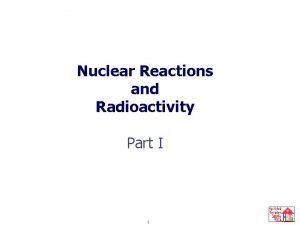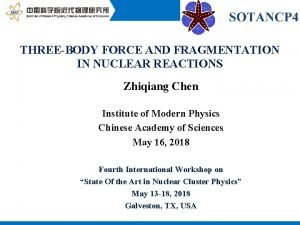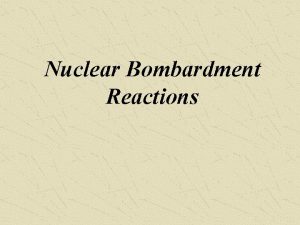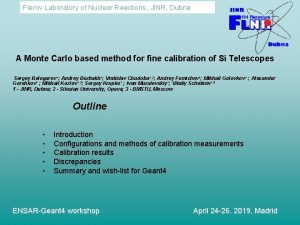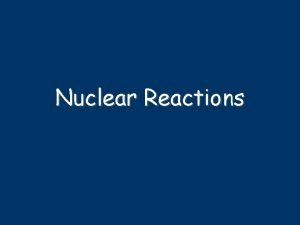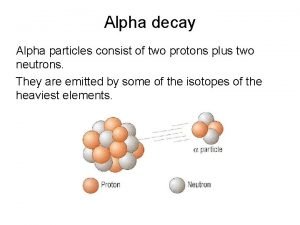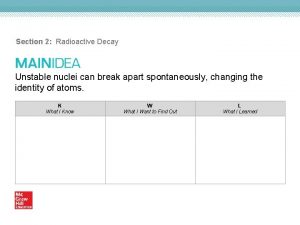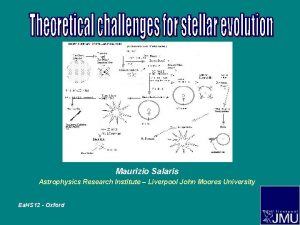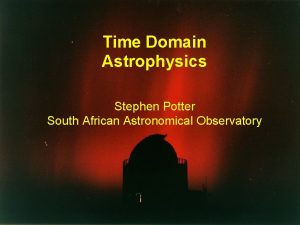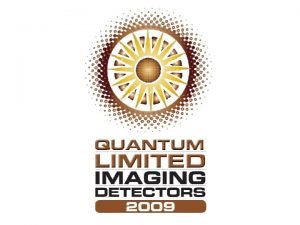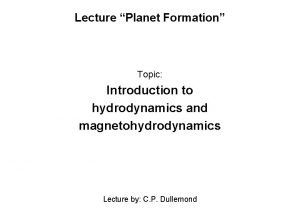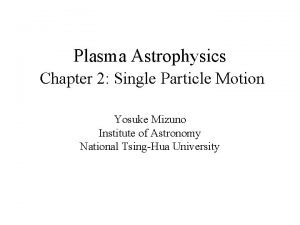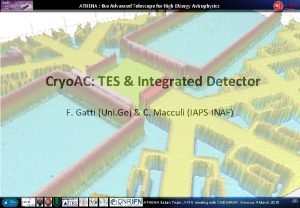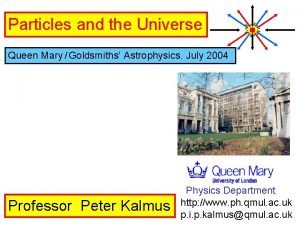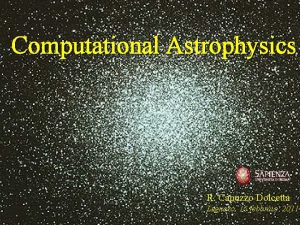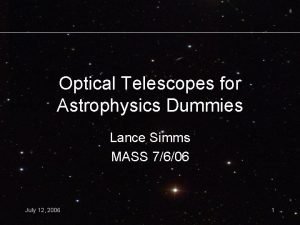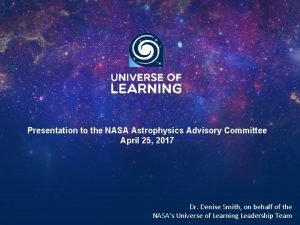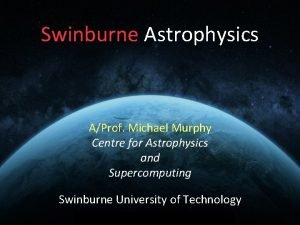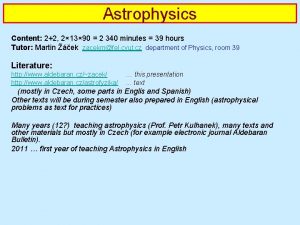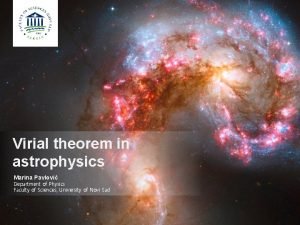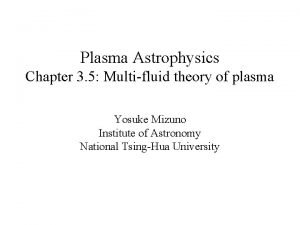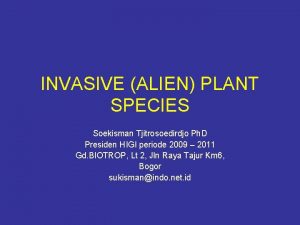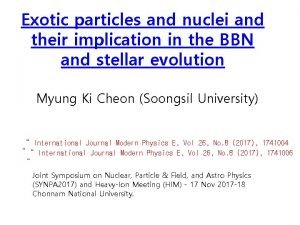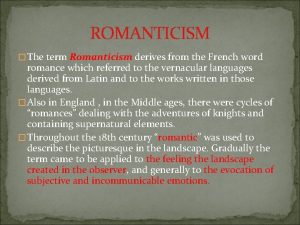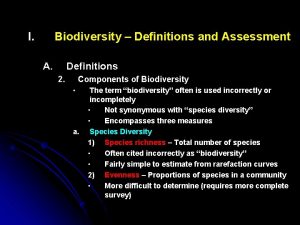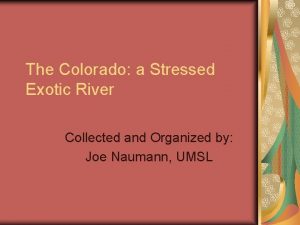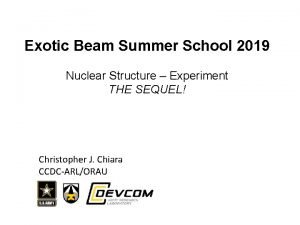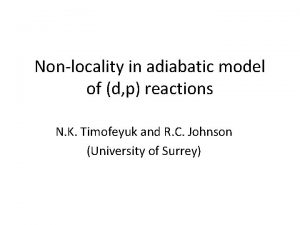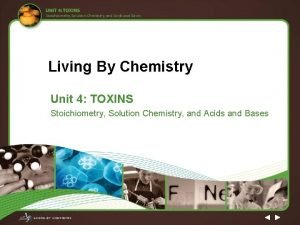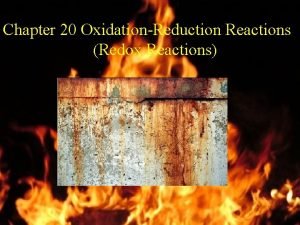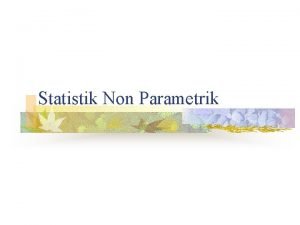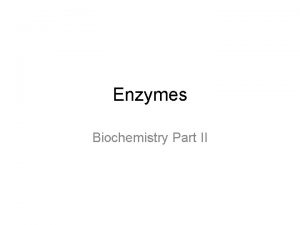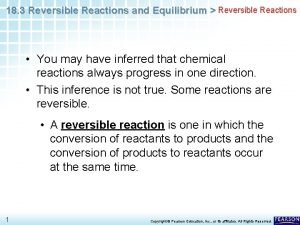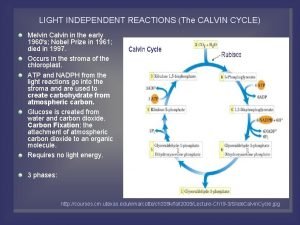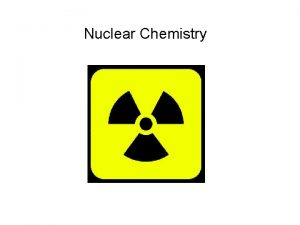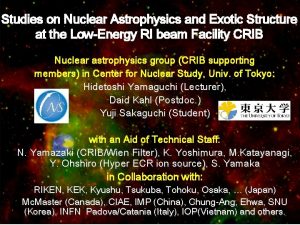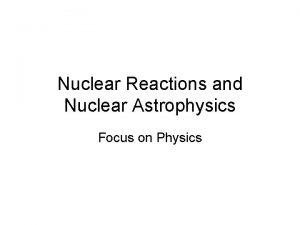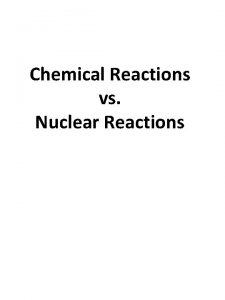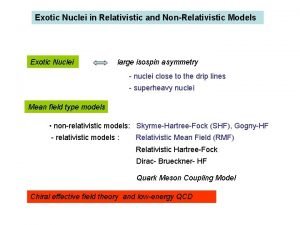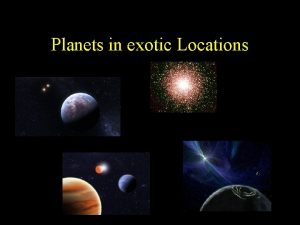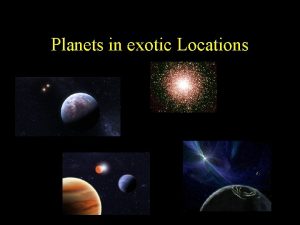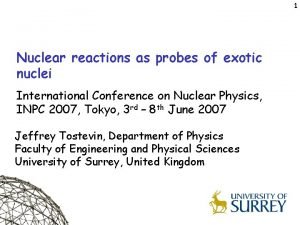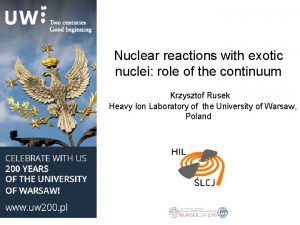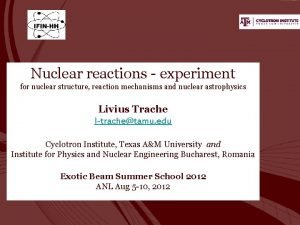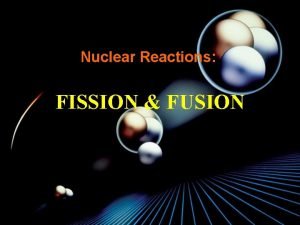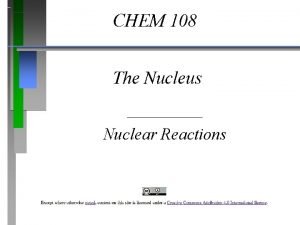Nuclear reactions experiment II Nuclear Astrophysics with exotic














![Complementarities: Coulomb and nuclear dissociation [46] T. Gomi, T. Motobayashi et al, JPG 31 Complementarities: Coulomb and nuclear dissociation [46] T. Gomi, T. Motobayashi et al, JPG 31](https://slidetodoc.com/presentation_image/e9f7c7db1dc5c556ab3b6737feac3b05/image-15.jpg)








































- Slides: 55

Nuclear reactions – experiment (II) … Nuclear Astrophysics with exotic nuclei and rare ion beams Decay spectroscopy for nuclear astrophysics Livius Trache Texas A&M University and IFIN-HH Bucharest Exotic Beam Summer School 2012 ANL Aug 5 -10, 2012

5. Applications to Nuclear Astrophysics a) Direct measurements – at stellar energies, or close b) Indirect methods – measurements at lab energies -> stellar energies Indirect methods in NPA with RNB (w. examples from TAMU) – – A. Coulomb dissociation B. Transfer reactions (ANC method) C. Breakup of loosely bound nuclei D. resonant spectroscopy – -decay, resonant elastic scattering, etc – E. Trojan Horse Method (non-RNB so far! Just starting …)

Radiative capture reactions Projectile X * Radiative capture reactions A(p, )B, A(a, ), A(n, ) Plane Wave * Non-resonant or resonant reactions. Target A * At low energy, the probability that the incoming charged particle penetrates the Coulomb barrier: γ Final Orbit Nucleus B Coulomb Barrier * Reaction rate per particle pair (integrate over E distr): to determine Potential V(r) * The cross section – astrophysical S-factor: Stars are cold! Ep=10 s-100 s ke. V Target A Projectile Distanc e r Nuclear Radius R n • Reactions (that matter) take place in the Gamow energy window. • Direct, or non-resonant part 3 * C. Rolfs and W. Rodney, “Cauldrons in the Cosmos”.

M. Smith & E. Rehm + fission barriers ? ! mass, T 1/2 resonances site, path? ! mass, T 1/2 on res + r i D Two big problems: 1. - reactions in stars involve(d) radioactive nuclei use RNB 2. - very small energies and very small cross sections indirect methods 4

5 a 5

EXPERIMENTAL SOLUTIONS IMPROVEMENTS TO REDUCE THE BACKGROUND -(UNDERGROUND LABORATORY) Use of laboratory with natural shield ( underground physics-for instance LUNA experiment at LNGS-Italy ) 2 H(p, )3 He GRAN SASSO NO EXTRAPOLATION GAMOW ENERGY

7

8

5 b) Indirect methods for nuclear astrophysics Comparison with (reaction) calculations Measurement at lab energies Extract (nuclear structure) information Compare with direct measurements Need good additional knowledge (data). Reliable absolute values Calculate astrophysical S-factor or reaction rates 9

Techniques used to determine (p, ) reaction rates • • Work at TAMU on nuclear astrophysics a) indirect methods (p- or n-transfer) b) RNBs or stable beams Lessons learned: 1. Seek the relevant quantities (ex: SF vs ANC) 2. Model or parameter independent 3. Combination of methods is useful – availability important 4. Need more in terms of supportive information for reliable calculations: theories, models (and codes), effective n-n interactions, systematics … → still need good stable beam data OMP, reaction models, … 10

A. Coulomb dissociation p • Radiative capture - direct process Ep – X(p, )Y • Photodissociation - inverse process Sp 7 Be 8 B – Y( , p)X • Use detailed balance theorem • virtual photons – Coulomb Dissociation p Ep Sp 7 Be 8 B

14 N(12 N, 13 O) proton-transfer react 12 N(p, )13 O (rap proc) ANC, S-factor 0 -2 Me. V Reaction rate Transfer & elastic @12 Me. V/u TAMU MARS 12 N beam 2 105 pps A. Banu et al, Phys Rev C 79, 025805 (2009) 12

Neutron transfer – 14 N(7 Li, 8 Li)13 C Study mirror reaction – neutron transfer with stable beam to obtain information on 8 Li Use charge symmetry 8 Li - 8 B Results: C 2 tot(8 B)= 0. 455 0. 047 fm-1 S 17(0) = 17. 6 1. 7 e. V b & Mixing ratio C 2(p 1/2)/C 2(p 3/2)=0. 13(2) LT e. a. , PRC 67, June 2003 13

Example: Summary of the ANC extracted from 8 B breakup with different interactions Data from: F. Negoita et al, Phys Rev C 54, 1787 (1996) B. Blank et al, Nucl Phys A 624, 242 (1997) D. Cortina-Gil e a, Euro. Phys J. 10 A, 49 (2001). R. E. Warner et al. – BAPS 47, 59 (2002). J. Enders e. a. , Phys Rev C 67, 064302 (2003) All available breakup cross sections on targets from C to Pb and energies 27 -1000 Me. V/u give consistent ANC values! Summary of results: LT ea, PRL 87, 2001 LT ea, PRC 67, 2004 7 Be(p, ) 8 B (solar neutrinos probl. ): p-transfer: S 17(0)=18. 2± 1. 7 e. Vb Breakup: S 17(0)=18. 7± 1. 9 e. Vb Direct meas: S 17(0)=20. 8± 1. 4 e. Vb 14
![Complementarities Coulomb and nuclear dissociation 46 T Gomi T Motobayashi et al JPG 31 Complementarities: Coulomb and nuclear dissociation [46] T. Gomi, T. Motobayashi et al, JPG 31](https://slidetodoc.com/presentation_image/e9f7c7db1dc5c556ab3b6737feac3b05/image-15.jpg)
Complementarities: Coulomb and nuclear dissociation [46] T. Gomi, T. Motobayashi et al, JPG 31 (2005) 15

Results from 24 Si breakup C 2(24 Sigs) = 62. 4 7. 1 fm-1 SF = 2. 5 -2. 9 => first exp determination of the direct comp of 23 Al(p, )24 Si ! 1 E+01 23 Al(p, g)24 Si reaction rate 22 Mg(p, )23 Al(p, )24 Si seq. 2 p capture imp in XRB Note: exp made with 30 pps! A. Banu et al, PRC 85 (2012) react rate [cm 3/mol/sec] 1 E+00 1 E-01 1 E-02 1 E-03 nonres (shell model) 1 E-04 res + nonres (previous work) res-updated (this work) 1 E-05 1 E-06 0. 000 0. 500 1. 000 1. 500 2. 000 temp [GK] 2. 500 3. 000

Explosive H-burning in novae: “ 22 Na observation” - novae: explosive H-burning of accreting material in binaries star-WD. ~ 30/yr. - rays from the decay of long-lived isotopes like 26 Al have been detected - E=1. 275 Me. V ray following the decay of 22 Na predicted, but not observed by space gamma-ray telescopes 24 Si 140 ms Ne. Na cycle 22 Na depletion in novae: how does it happen? - what are the stellar reaction rates for the 22 Mg(p, )23 Al and 22 Na(p, )23 Mg? - what about 22 Mg(p, )23 Al(p, )24 Si seq. 2 p capture? Imp in XRB

Questions to nuclear structure: “ 23 Al structure and consequences on 22 Mg(p, )23 Al reaction rate” - is 23 Al a proton-halo nucleus ? Nuclear physics input to NA!!! Sp = 142 ke. V X. Z. Cai et al. , PRC 65, 024610 (2002) - a case of “level inversion” towards p-rich nuclei ? • g. s. of mirror nuclei 2310 Ne 13 vs. 2313 Al 10 1/2+ 5/2+ 1017 ke. V 550 ke. V gs 23 Ne gs 23 Al huge Thomas-Ehrman effect ? ! 18 - what are the gound state spin and parity of 23 Algs ?

Summary 5 b) • Indirect methods w RNB – valuable tool for nuclear astrophysics • Accuracies of 10 -15% can be obtained • Q: Good enough? ! • For better accuracies more work needed, including systematic studies and development of structure and reaction theories (and codes): – Work close to proton drip line makes continuum important, antisym, etc… • Combination of methods is important • Q: what are the most imp reactions ? ! 19

Decay spectroscopy for nuclear astrophysics

Motivation • Proton capture – a class of reactions important in nuclear astrophysics – Radiative proton capture reactions: X(p, )Y • Reactions take place in a narrow range of energies: (Gamow window) due to Coulomb repulsion & Maxwell distribution • Stars are cold! Ep=10 s -100 s ke. V • Can have: non-resonant (continuum) and resonant capture * C. Rolfs and W. Rodney, “Cauldrons in the Cosmos”.

Resonant Reaction Rate * Resonant reaction is a two-step process. * The cross section (Breit-Wigner): * The contribution to the reaction rate: Stars are cold! Ep=10 s-100 s ke. V * C. Rolfs and W. Rodney, “Cauldrons in the Cosmos”. where to determine w = resonance strength 07 -Oct-20 22

also 38 Ca, 46 V, 57 Cu, 62 Ga, … n = studied at TAMU po m o c t n a nt n o ina s re om : d ell = planned h s d- s 21 Al nt e on t p m rtan o c t po c e ir r im 16 Ne d : nt o l l he ina 14 F 15 F s p dom 31 Ar 32 Ar 33 Ar 34 Ar 35 Ar 36 Ar 30 Cl 31 Cl 32 Cl 33 Cl 34 Cl 35 Cl 33 S 34 S 27 S 28 S 29 S 30 S 31 S 32 S 25 P 26 P 27 P 28 P 29 P 30 P 31 P 23 Si 24 Si 25 Si 26 Si 27 Si 28 Si 29 Si 30 Si 22 Al 23 Al 24 Al 25 Al 26 Al 27 Al 20 Mg 21 Mg 22 Mg 23 Mg 24 Mg 25 Mg 26 Mg 19 Na 20 Na 21 Na 22 Na 23 Na 17 Ne 18 Ne 19 Ne 20 Ne 21 Ne 22 Ne 16 F 17 F 18 F 19 F 16 O 17 O 18 O stable 12 O 13 O 14 O 15 O 11 N 12 N 13 N 14 N 15 N 9 C 10 C 11 C 12 C 13 C 14 C 8 B 9 B 10 B 7 Be 8 Be 9 Be 11 B ts n e used at TAMU (p, n) possible 15 C (p, 2 n) possible

Decay spectroscopy Energy 5/2+ Resonant Capture 23 Al Gp a two-step process Selection rules Coulomb Barrier p G Radius Resonance st Sp Conditions: QEC >Sp+2 mec 2 J=3/2+, 5/2+, 7/2+ +23 Mg* 22 Na+p 23 Mg 5/2+, 7/2+ 3++1/2+ +0+ Nuclear Potential Same compound system: 23 Mg Resonant contributions to reaction rate: Lower proton energies most important, but very difficult: w =(2 J+1)/(2 j+1)(2 I+1)b bp*G • lower branching • increased exp difficulties (det windows, background, etc…) Need energy, Jr and resonance strength

Decay spectroscopy Beta- and beta-delayed proton-decay Explosive H-burning in novae & IAS in Tz=-3/2 nuclei Isospin mixing GT strength distribution 22 Na depletion in novae 22 Na(p, )23 Mg* & 22 Mg(p, )23 Al→ 23 Mg* bottleneck r. in novae 31 Cl→ 31 S* 30 P(p, )31 S* See Jordi’s list!

Explosive H-burning in novae: “ 22 Na production” - novae: explosive H-burning of accreting material in binaries star-WD. ~ 30/yr. - rays from the decay of long-lived isotopes like 26 Al have been detected - E=1. 275 Me. V ray following the decay of 22 Na predicted (Clayton, Hoyle), but not observed by space gamma-ray telescopes Ne. Na cycle T 1/2=2. 6 yr Q: why? ! Novae model(s) inappropriate? ! Nuclear data incorrect? ! Not enough 22 Na produced or depleted? ! 22 Na depletion in novae: how does it happen? - what are the stellar reaction rates for the 22 Mg(p, )23 Al and 22 Na(p, )23 Mg? 26

MARS 23 Al In-flight RB production 24 Mg 23 Al 48 A Me. V 40 A Me. V Purity: 90%, or >99% after en degrader Intensity: ~ 4000 pps First time - very pure & intense 23 Al (p, 2 n) reaction Primary beam 24 Mg @ 48 A Me. V – K 500 Cycl Primary target LN 2 cooled H 2 gas p=1. 6 -2 atm Secondary beam 23 Al @ 40. 2 A Me. V

Isotope selection with MARS N=Z-2 N=Z-3 N=Z-1 E Pos ~ q/m Final cut with focal plane slits 24 Al used for en and eff calibration of Ge detector to E =8 Me. V

decay study of pure RB samples

- coincidence spectrum IAS 23 Al BGO

23 Al -decay results • First clean and intense 23 Al source • Found decay scheme • established g. s. Jp=5/2+ (not 1/2+) [VE Iacob ea, PRC 74, Oct 2006; also A. Ozawa ea, PRC 74, Aug 2006 from magn mom meas] 22 Mg(p, )23 Al not important for depletion of 22 Na in novae • absolute branching ratios (not easy or common!) • measured T 1/2=446(4) ms (<1% accuracy) - w. -ray multiscaling • and absolute log ft • • • identified IAS E*=7802. 9(5) ke. V by logft=3. 31(2) – meas! used IMME to get new 23 Al mass Sp(23 Al)=143(3) ke. V – Note: after mass meas in Jyvaskyla, became best IMME check! and Sp=141. 11(43) ke. V Located IAS & state at E*=7787 ke. V – important resonance in 22 Na(p, )23 Mg

23 Al -decay results • First clean and intense 23 Al source • Found decay scheme • established g. s. Jp=5/2+ (not 1/2+) [VE Iacob ea, PRC 74, Oct 2006; also A. Ozawa ea, PRC 74, Aug 2006 from magn mom meas] 22 Mg(p, )23 Al not important for depletion of 22 Na in novae • absolute branching ratios (not easy or common!) • measured T 1/2=446(4) ms (<1% accuracy) - w. -ray multiscaling • and absolute log ft • • • identified IAS E*=7802. 9(5) ke. V by logft=3. 31(2) – meas! used IMME to get new 23 Al mass Sp(23 Al)=143(3) ke. V – Note: after mass meas in Jyvaskyla, became best IMME check! and Sp=141. 11(43) ke. V (A. Saastamoinen ea, PRC 80, 2009) Located IAS & state at E*=7787 ke. V – important resonance in 22 Na(p, )23 Mg

PRC 80, 044330 2009 33

23 Al -decay results • First clean and intense 23 Al source • Found decay scheme • established g. s. Jp=5/2+ (not 1/2+) [VE Iacob ea, PRC 74, Oct 2006; also A. Ozawa ea, PRC 74, Aug 2006 from magn mom meas] 22 Mg(p, )23 Al not important for depletion of 22 Na in novae • absolute branching ratios (not easy or common!) • measured T 1/2=446(4) ms (<1% accuracy) - w. -ray multiscaling • and absolute log ft • • • identified IAS E*=7802. 9(5) ke. V by logft=3. 31(2) – meas! used IMME to get new 23 Al mass Sp(23 Al)=143(3) ke. V – Note: after mass meas in Jyvaskyla, became best IMME check! and Sp=141. 11(43) ke. V Located IAS & state at E*=7787 ke. V – most important resonance in 22 Na(p, )23 Mg

Tighe ea, LBL 1995 Perajarvi ea, JYFL 2000 (p, ) vs p-decay 5/2+ 23 Al Proton br. total=? !% 0. 446(4)s β Qec=12240 ke. V + β ? !% 22 Mg(p, )23 Al + 9548 8456 8164 8003 7877 p IAS: ft=2140 s +/-5% 7803 IAS 5/2+ 7787 (7/2)+ 22 Na ? !% Sp=7580 ke. V 6985 5/2+ E=207 ke. V => DE=16 ke. V 6575 5/2+ Unusually strong isospin mixing! (? !) 2905 (3, 5/2)+ 22 Na(p, )23 Mg 2359 1/2+ NO! 2051 7/2+ resonances VE Iacob, et al. , PRC 74, Oct. 2006 Most important: w 7787=__. _? ! me. V 450 5/2+ 0 3/2+ 23 Mg & Y Zhai thesis

Method: implantation in very thin Si detectors! MARS implantation station Energy degrader 275 mm OD F=150 mm thermocooler connectors 64 mm >110 mm E=Ep+k. Erecoil+<DEb> 18” dia chamber F=80 mm p-detector – v. thin DS Si strip 65 or 45 mm W 1 -65 BB 2 -45 b-detector – thick Si det 1 mm -detector – HPGe 70% effic Pulsed beam

Si strip 61 mm “HI telescope mode” – control implantation Si 1000 mm Signal=EHI 17 mm Signal=DEHI HI Dp/p=+/-0. 25% proton 36° DE (p) b Signal=DE ° Gamma-ray 30 0° Signal=Ep+DE “b-proton mode” measure simultaneously: • -proton and • - coinc. Si stops protons: ½ 65 mm Ep<1. 5 Me. V E (b)

23 Al b-delayed p-decay sp – after bkg subtraction Resonances for 22 Na(p, )23 Mg Gamow window 1204 39 44 4 0 367 207 267 57 9 6 86 E=223 ke. V IAS “world record” Antti Saastamoinen et al. , PRC 83, 2011

b allowed GT Superallowed F w =(2 J+1)/(2 j+1)(2 I+1)b bp*G Most important resonance: Eres=207 ke. V w =1. 4 me. V (+. 5, -. 4) G from t=10(3) fs Jenkins ea, PRL 2004 Eres (ke. V) 207 7787 0. 14(3)% 223 7803 ? ! 267 7848 0. 18(4)% 337 7917 0. 03(1)% 443 8024 0. 02(1)% 579 8160 0. 28(1)% 866 8447 0. 41(1)% 1204 8785 0. 02(1)% 1. 22(5)% IAS Eexc (ke. V) br-p (of 100 beta) total p IAS, 5/2+ T=3/2 7787 (7/2)+ ? ! 3. 7% 22 Na + p Rare case known!) s of & p-branching measured simultaneously ! (2 nd 23 Al (5/2, 7/2)+ 3+ 5/2+ 78. 2% 18. 0% 7/2+ 5/2+ 3/2+, T=1/2 23 Mg

Full disclosure! Background subtracted using decay of 22 Mg (not a proton emitter)

23 Al p meas with Si det • Low energy beta background hurts!

Solution: ASTROBOX Last spring emitted proton electrons be am E Pollacco (CEA Saclay) proposed: • Gas detector w MICROMEGAS • Low proton energies (~1 -200 ke. V), good resolution (5 -10%) • Reduced background

Run 0311 B: 23 Al p-decay with ASTROBOX Implantation control Off-beam spectrum 866 579 267 337 Outer + center 234 IAS? ! Center detector 206 ke. V be Ou tas ar f ter

A few images are worth a thousand words! W 1 -65 det 16 x 16 strips 3. 1 mm BB 2 -45 det 24 x 24 strips, 1 mm

Energy (a. u. ) 31 Cl production and separation 32 Cl 31 Cl 29 S Position (0. 1 mm) = q/m

31 Cl -decay - status 2006/present exp Old: T 1/2 =150(25) ms New: T 1/2 = 190(1) ms Sp=6. 133 Me. V

31 Cl -decay results • • • First clean and intense 31 Cl source established -decay scheme determined relative branching ratios measured T 1/2=190(1) ms (<1% accuracy) identified IAS E*=6279. 5± 0. 3± 1. 5 (syst) ke. V and its decay • used IMME to get new, more precise 31 Cl mass ME(31 Cl)=-7064(8) ke. V QEC=11, 980(8) ke. V and Sp(31 Cl)=289(8) ke. V (imp for 30 S(p, )31 Cl !) • found precise energy of E*=6256(1) ke. V Eres=123(2) ke. V – important reson in 30 P(p, )31 S • did not find IAS proton branching (at Ep=146 ke. V – very difficult !!) 47

Results -delayed p-decay • Technique works well – can go to Ep~100 ke. V and, maybe, lower • Can work with lifetimes ~100 ms or less • Very selective: can separate well beam cocktails (by implantation depths) • Very sensitive: could obtain results for 21 Mg, 29 S at rates ~ 1 -10 pps in 8 hrs • Could study very weak branches (e. g. 20 Mg 50 pps) Strengths: – Good isotope separation (MARS) – In-flight production: need 30 -50 Me. V/u (can be implanted) – ASTROBOX opens new possibilities

Collaborators • M Mc. Cleskey, E Simmons, A Spiridon, BT Roeder, G Tabacaru, RE Tribble, JC Hardy, VE Iacob, A Banu* – Cyclotron Institute, Texas A&M University (* now at J Madison University, VA) • PJ Woods, T Davinson, G. Lotay – Univ of Edinburgh • J Aysto, A Saastamoinen, A Jokinen – Univ of Jyvaskyla • MA Bentley – Univ of York • E Pollacco et al. –CEA Saclay

If you want: - one of Europe’s four best schools in NA (with St. Tecla, Granada/Beirut and … Russbach), older (in wine’s sense!) than all together - to combine NA with exotic nuclei, neutrinos and particle astrophysics - mountains in summer - to see Dracula’s castle in original - see Karl-Ludwig, Carlos, Shawn, Jordi in person, Mounib, Claudio, Iolanda … - to see me (not speaking) again Come to the Carpathian Summer School Sinaia, Romania June 24 – July , 2012 Need visa: apply by March 31 No visa: apply by June 1 50

Carpathian Summer School of Physics Sinaia, Romania, June 24 -July 7, 2012 livius_trache@tamu. edu

Extreme Light Infrastructure 2006 – ELI on ESFRI Roadmap ELI-PP 2007 -2010 (FP 7) ELI-Beamlines (Czech Republic) ELI-Attoseconds (Hungary) ELI-Nuclear Physics (Romania) Project Approved by the European Competitiveness Council (December 2009) ELI-DC (Delivery Consortium): April 2010 Courtesy NV Zamfir (IFIN-HH Bucharest) 52

ELI – Nuclear Physics Research • Nuclear Physics experiments to characterize laser – target int. • Photonuclear reactions. • Exotic Nuclear Physics and astrophysics complementary to other NP large facilities (FAIR, SPIRAL 2). • Applications based on high intensity laser and very brilliant γ beams. Complementary to the other pillars ELI - Nuclear Physics in ‘Nuclear Physics Long Range Plan in Europe’ as a major facility 53

ELI – NP Experiments (1) Stand-alone High Power Laser Experiments • Nuclear Techniques for Characterization of Laser Interaction with Matter • Stopping Power of Charge Particles Bunches with Ultra-High Density • Laser Acceleration of very dense Electrons, Protons and Heavy Ions Beams • Laser-Accelerated Th Beam to produce Neutron-Rich Nuclei around the N = 126 Waiting Point of the r-Process via the Fission-Fusion Reaction • A Relativistic Ultra-thin Electron Sheet used as a Relativistic Mirror for the Production of Brilliant, Intense Coherent γRays

 Lesson 15 nuclear quest nuclear reactions
Lesson 15 nuclear quest nuclear reactions Section 2 classifying chemical reactions
Section 2 classifying chemical reactions Chemical reactions section 3 reactions in aqueous solutions
Chemical reactions section 3 reactions in aqueous solutions Chemical reactions section 2 classifying chemical reactions
Chemical reactions section 2 classifying chemical reactions Unit 5 chemical reactions answers
Unit 5 chemical reactions answers How to write half reactions
How to write half reactions Gamma decay nuclear equation
Gamma decay nuclear equation Nuclear reactions are at
Nuclear reactions are at Bombardment reactions
Bombardment reactions Geiger counter
Geiger counter Flerov laboratory of nuclear reactions
Flerov laboratory of nuclear reactions Key terms radioactivity and nuclear reactions
Key terms radioactivity and nuclear reactions Artificial transmutation equation
Artificial transmutation equation Nuclear decay reactions examples
Nuclear decay reactions examples Balancing nuclear reactions
Balancing nuclear reactions Two types of nuclear reactions
Two types of nuclear reactions Nuclear decays and reactions section 2
Nuclear decays and reactions section 2 Maurizio salaris
Maurizio salaris Time domain astrophysics
Time domain astrophysics Rit astrophysics
Rit astrophysics Astrophysics equations
Astrophysics equations Astrophysics
Astrophysics Advanced telescope for high energy astrophysics
Advanced telescope for high energy astrophysics Queen mary astrophysics
Queen mary astrophysics Astrophysics
Astrophysics Astrophysics for dummies
Astrophysics for dummies Nasa astrophysics advisory committee
Nasa astrophysics advisory committee Swinburne astrophysics
Swinburne astrophysics 13,90/2
13,90/2 Virial theorem in astrophysics
Virial theorem in astrophysics Astrophysics equations
Astrophysics equations Fisión nuclear vs fision nuclear
Fisión nuclear vs fision nuclear Exotic species definition
Exotic species definition Exotic species definition
Exotic species definition Rolls royce phantom rental houston
Rolls royce phantom rental houston Interference competition
Interference competition Exotic species definition
Exotic species definition Exotic nucleosynthesis
Exotic nucleosynthesis Romsnticism
Romsnticism Woman walking in an exotic forest
Woman walking in an exotic forest Exotic species definition
Exotic species definition Exotic breeds of rabbits
Exotic breeds of rabbits Community
Community Static hedging of exotic options
Static hedging of exotic options Is the colorado river an exotic stream
Is the colorado river an exotic stream Exotic beam summer school
Exotic beam summer school Dp reactions
Dp reactions Forward typing tube method
Forward typing tube method Ecell vs log cu2+
Ecell vs log cu2+ Toxic reactions chemical equations
Toxic reactions chemical equations Chapter 20 worksheet redox
Chapter 20 worksheet redox Balancing redox reactions
Balancing redox reactions Statistik non parametrik
Statistik non parametrik What is the role of enzymes in chemical reactions
What is the role of enzymes in chemical reactions 18.2 reversible reactions and equilibrium answer key
18.2 reversible reactions and equilibrium answer key Light independent reactions
Light independent reactions






